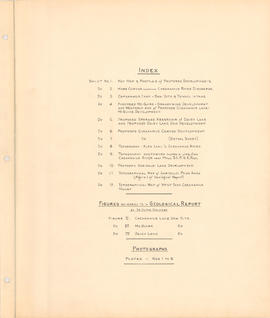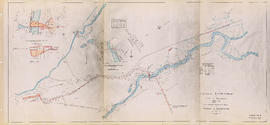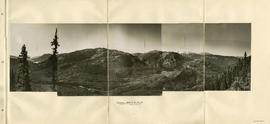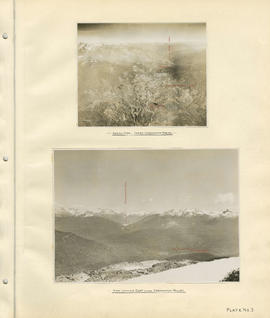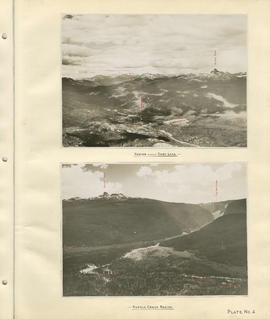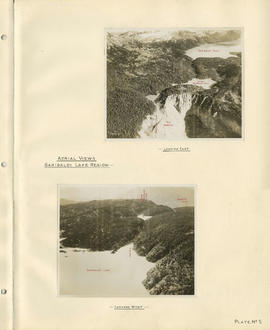Title and statement of responsibility area
Title proper
City Clerk's Office report files
General material designation
- Textual record
Parallel title
Other title information
Title statements of responsibility
Title notes
- Source of title proper: Title taken from records schedule.
Level of description
Series
Reference code
Edition area
Edition statement
Edition statement of responsibility
Class of material specific details area
Statement of scale (cartographic)
Statement of projection (cartographic)
Statement of coordinates (cartographic)
Statement of scale (architectural)
Issuing jurisdiction and denomination (philatelic)
Dates of creation area
Date(s)
Physical description area
Physical description
12.74 m of textual records
Publisher's series area
Title proper of publisher's series
Parallel titles of publisher's series
Other title information of publisher's series
Statement of responsibility relating to publisher's series
Numbering within publisher's series
Note on publisher's series
Archival description area
Name of creator
Administrative history
The basis for the authority of the City of Vancouver's City Council is the first Vancouver Act of Incorporation of April 6, 1886 enacted by the Government of the Province of British Columbia. The Act set out the powers, functions, and some procedures relating to the government of the City of Vancouver, and required election of a City Council, the governing body of the local government. Although the City of Vancouver funds the Library, the schools, and the parks, each of these have their own governing boards. The Act of Incorporation (more recently called the Vancouver Charter) has been amended frequently, and is periodically revised and consolidated. The Act has defined the increasing land parameters of Vancouver. In 1886 Vancouver extended from the West End and Alma Road in the west, to Nanaimo Street in the east, and 16th Avenue to the south. In 1911, District Lot 301 and the Townsite of Hastings were annexed (so that Vancouver then extended east to Boundary Road, and south to 25th and 29th Avenues in some areas of the eastern half of the city). Then in 1929, the municipalities of South Vancouver and Point Grey were amalgamated with Vancouver (to result in present-day boundaries to the south and west). City Council's powers may be exercised by by-law or resolution, according to the provisions of the Charter. Powers have included: creation and maintenance of "public works" (now often referred to as "the infrastructure"); land and building regulation; provision of police and fire protection; maintaining health standards; provision of cultural and recreation services; and tax collection through property taxes, business licenses, and other fees. Local government is responsible to the provincial government, according to the Municipal Act of British Columbia. Some of the relationships with provincial and federal government are intricate, as program requirements are legislated from above, and some program funding is provided by senior governments. The Mayor is the president of Council according to British parliamentary traditions. In order to carry out its functions Council has the authority to determine the internal organization of the governance and bureaucracy. Until 1956 Council was formally involved in all aspects of the operations of the City through the "Council Committee" system. The system was seen as increasingly cumbersome and ineffective, so the Board of Administration was created to take care of managing operations, all the bureaucracy's administrative and service functions except governance (as of 1974 the Board was replaced by the City Manager). Standing committees, as subdivisions of the major aspects of the business of Council, have always existed.
The responsibilities of the City Clerk were established with the Act of Incorporation in 1886, which declared the City Clerk to be the Returning Officer of the City (the official responsible for voters' lists and elections). Additional duties included purchasing supplies and were somewhat undefined. With the clarifications of the 1900 Act of Incorporation, formalized responsibilities included recording Council minutes, keeping custody of the by-laws, and maintaining financial records. The Clerk also received all mail directed to the City. A 1912 by-law assigned responsibility for facilitating communication between the citizens, the Mayor, Council, and Council's committees to the City Clerk. In a 1953 Act of Incorporation amendment, the Clerk was named as custodian of the City seal. With the exception of financial functions, which long ago passed to financial officers, the Clerk's responsibilities have remained remarkably consistent. The primary functions over time have been: taking minutes for the meetings of City Council and related bodies; keeping the records of the City of Vancouver as required by the Vancouver Charter; carrying out correspondence on behalf of Council; keeping all records related to City Council decision making (including large volumes of supporting documents); assembling voters' lists and carrying out elections (for Council, the Park Board, the School Board, and on plebiscites); providing communication, information, and public relations services, including responsibility for civic ceremonies; and, since 1970, responsibility for the Archives. From 1886 to 1974, the City Clerk reported directly to Council; from 1974 the position has been reporting to the City Manager's Office. Although the formal organization of the City Clerk's Department has in recent years consisted of a number of divisions - the Council secretariat, the Voters' List Division, periodically a small Public Relations / Communications Division, and the Archives and Records Division (since 1970) - in practice, the Office of the City Clerk has included all divisional sections except the Archives. During some periods the Office of the City Clerk was more commonly referred to as the City Clerk's Office, though the former has prevailed.
The following individuals have served as City Clerk:
Thomas Francis McGuigan, 1886-1905
Arthur McEvoy, 1905-1907
William McQueen, 1907-1931
Charles Jones, 1931-1935
W. L. Woodford, 1935
Fred Howlett, 1935-1945 (acting 1935-1937)
Ronald Thompson, 1945-1973
Douglas Haig Little, 1973-1978
Robert Henry, 1978-1987
Maria Kinsella, 1987-1997
Ulli Watkiss, 1998-2001
Syd Baxter, 2001-2008
Marg Coulson 2008- (acting 2008-2009)
For more historical information on the above bodies see the inventory for the City Council and the Office of the City Clerk fonds. Administrative histories for other creators in this fonds (e.g. Airport Board) are given at the series level.
Related Resources:
For South Vancouver and Point Grey municipality Council, City Clerk's, and all other retained archival records dating from before amalgamation with the City of Vancouver in 1929, see the Corporation of the District of South Vancouver fonds and the Corporation of Point Grey fonds. The offices forming City Council, the mayor and aldermen (now called councillors), are arranged as the Mayor's Office fonds and the Councillors' office fonds.
Custodial history
Scope and content
Series consists of reports (published and unpublished), some publicity brochures, a few unusual items (e.g. handwritten notes by the designer of the City's crest), and a small amount of correspondence related to certain report files, all assembled for reference purposes in the Clerk's function as secretariat of City Council. Most "report files" are related to Council business of the time, therefore including reports from departments, outside organizations, and American sources. Originally arranged according to an arbitrary numbering system (this numbering is noted, e.g. "Report file no. x"); now arranged by startyear and therein by title of the file or title of the report (which reveals a number of duplicates).
Notes area
Physical condition
Immediate source of acquisition
Transferred to the Archives in several accessions, the last received in 1991.
Arrangement
Language of material
Script of material
Location of originals
Availability of other formats
Restrictions on access
Terms governing use, reproduction, and publication
Finding aids
File list available which includes titles, authors of reports where applicable, and any file numbering assigned by the Office of the City Clerk.
Associated materials
Board of Administrations' and City Managers' reports to Council are rarely filed here, instead are attached to Council minutes (series 31) and indexed with them (series 32); Operational subject files (series 62) file lists occasionally refer to a report file; this series continued as part of Operational subject files (series 62) as of 1983; the Archives' City Publications Collection contains some duplication as well as related items.
Accruals
No further accruals expected.

